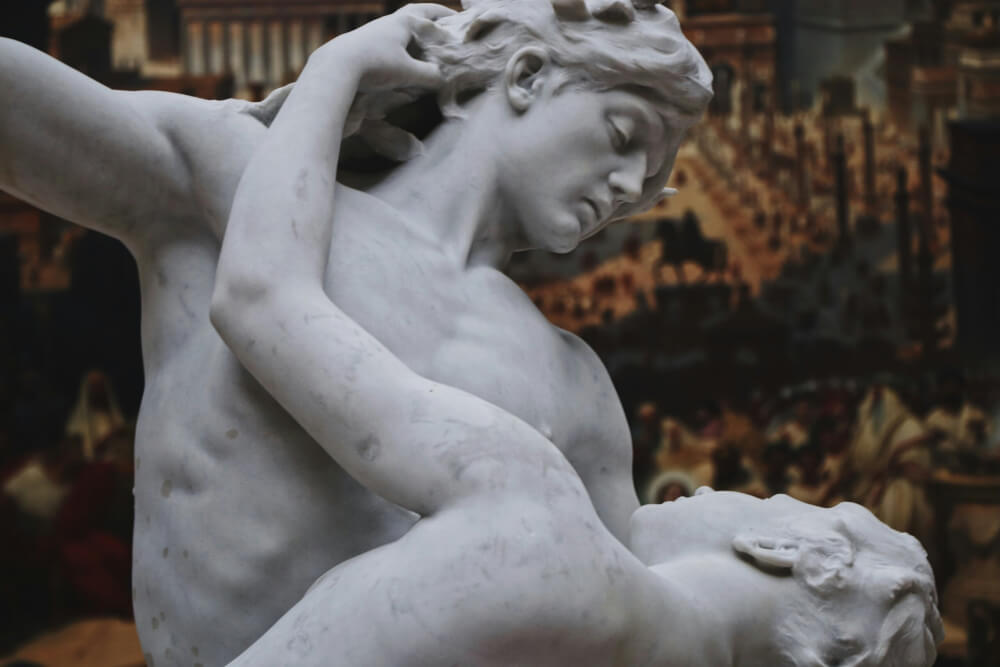*FYI - this post may contain affiliate links, which means we earn a commission at no extra cost to you if you purchase from them. Also, as an Amazon Associate I earn from qualifying purchases. Check out our Privacy Policy and Disclosure. for more info.
As far as aesthetics are concerned, Rouen may well be one of the prettiest cities in France, with medieval charm seeping from every cobble.
As the capital of Normandy, Rouen is a city steeped in acclaim, with epic nicknames like “the city of a hundred spires” (thanks, Victor Hugo!) as well as plenty of gorgeous artwork immortalizing its beauty and (often turbulent) history.
And sure, while it’s best known for being where Joan of Arc was burned at the stake, there’s a lot more to the city than just famous death spots, including an iconic cathedral, a wildly beautiful clock, enchanting streets filled with half-timbered buildings and pedestrianized streets perfect for frolicking. It’s also a student city, which means plenty of opportunities for vibrant nightlife too.
So, if you’re wondering what to do in Rouen, read on! This post will summarize all my favourites.
1. Rouen Cathedral (Cathédrale Notre-Dame)
By far, the #1 thing to do in Rouen is a visit to the magnificent Rouen Cathedral, an architectural masterpiece and muse of none other than Claude Monet, whose famous series of ‘Rouen Cathedral’ paintings depict the cathedral façade at various times of day and year.
He loved the cathedral so much, he painted over 30 of these! And it’s easy to see why he became so obsessed.
The Cathédrale Notre-Dame de Rouen has a rich history that dates back to the 4th century, when a church was first built on the site… though the current Gothic structure we see today started construction in the 12th century, with additions and modifications continuing well into the 1500s.
The result of these centuries of work? A glorious showcase of Gothic styles, with a striking exterior consisting of three towers each with a unique style and design. This aesthetically pleasing identity crisis is one of the many reasons why visitors come to the cathedral in droves.
More than a pretty face though, this cathedral has also witnessed numerous historical events, including the trial of Joan of Arc. Today it stands as a symbol of the city’s resilience and faith, making it a must-visit for anyone exploring the city!
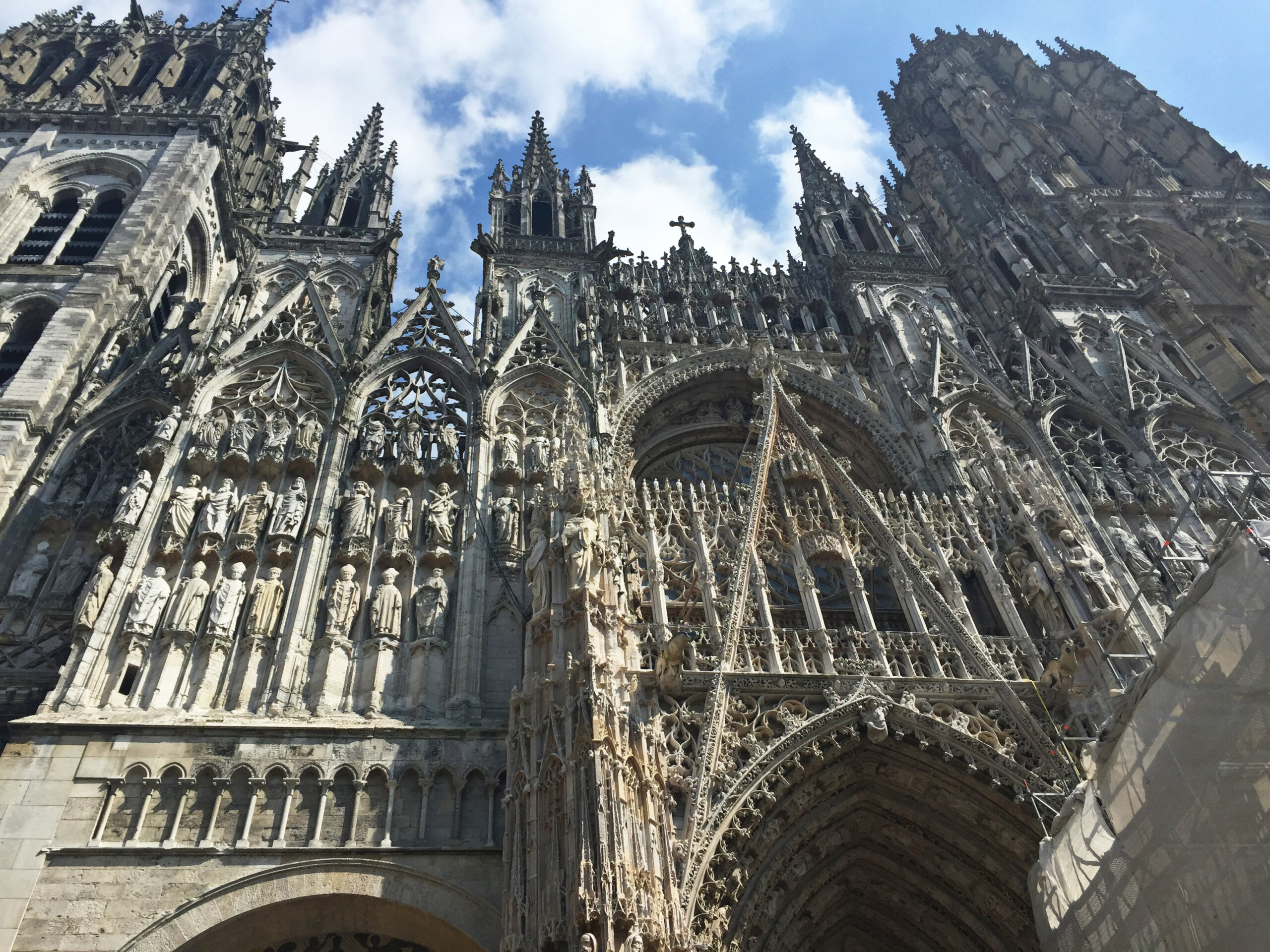
Of course, it goes without saying, the inside isn’t bad either:
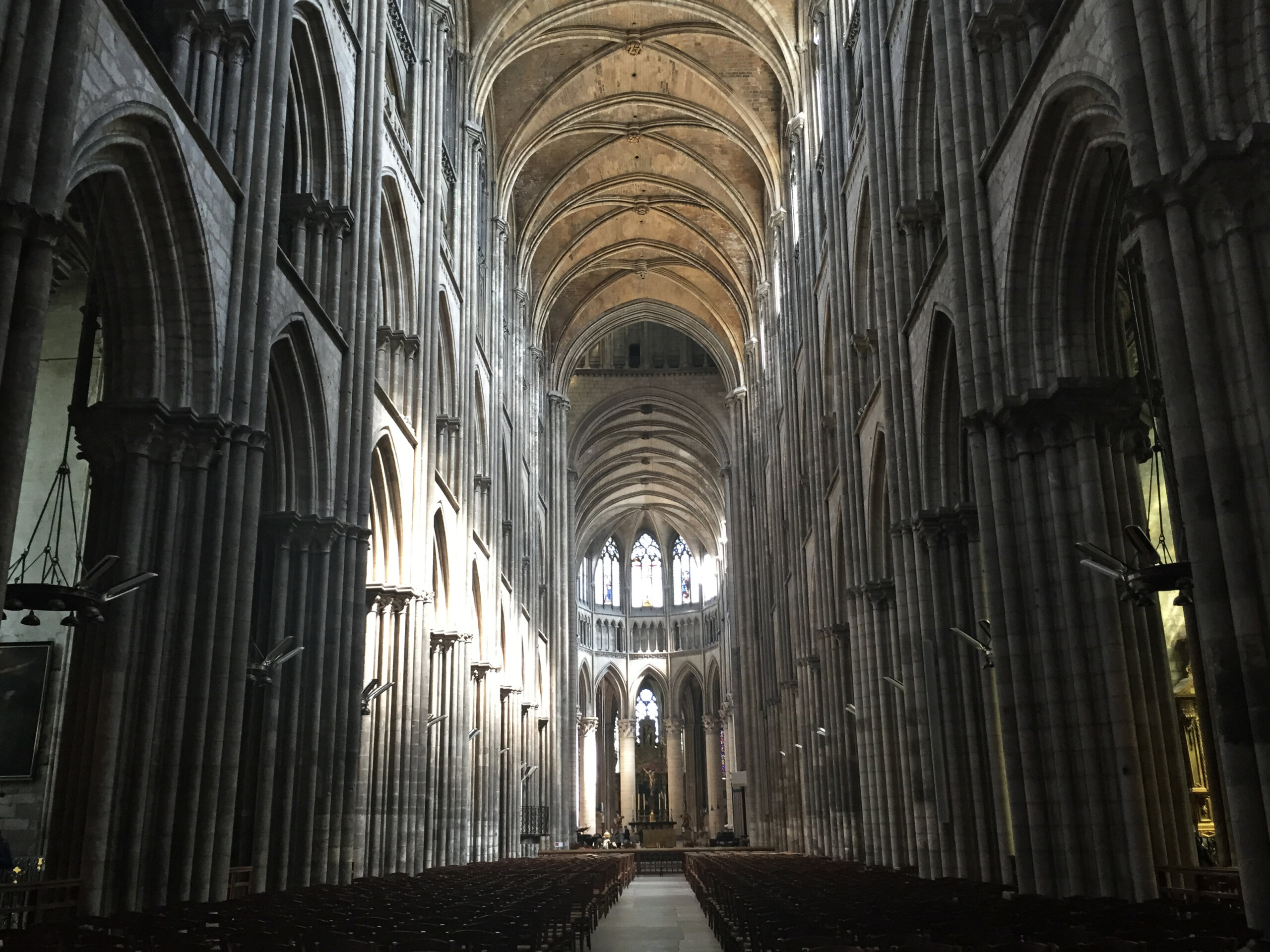
2. Gros-Horloge (Great Clock)
Another must-do in Rouen is a stroll along the Rue du Gros-Horloge (Great Clock St), where you can marvel at its namesake, the Gros-Horloge (Great Clock), one of the city’s prettiest and most famous symbols.
This ornate astronomical clock dates back to the 16th century and adds a touch of historical magic to the city center… even though shhh – these days it’s actually powered by electricity. The mechanism within remains one of the oldest in the country though, and the clock face you see today is shiny as new despite its installation in the Renaissance period, thanks to a restoration in 2006.
With it vibrant colours and gilded accents, along with gorgeous astronomical clock staples like symbols representing days of the week, phases of the moon, and various mythological figures, this is definitely a must-see photo opp to enjoy in Rouen.
But one of the coolest things about the Gros-Horloge is that it’s not just a pretty façade. You can actually visit the interior of the clock tower and take a guided tour that takes you behind the scenes. Inside, you’ll find the original mechanisms that have been meticulously maintained over the centuries. The tour also takes you up to the belfry, where you can see the bells and enjoy panoramic views of Rouen’s rooftops and spires.
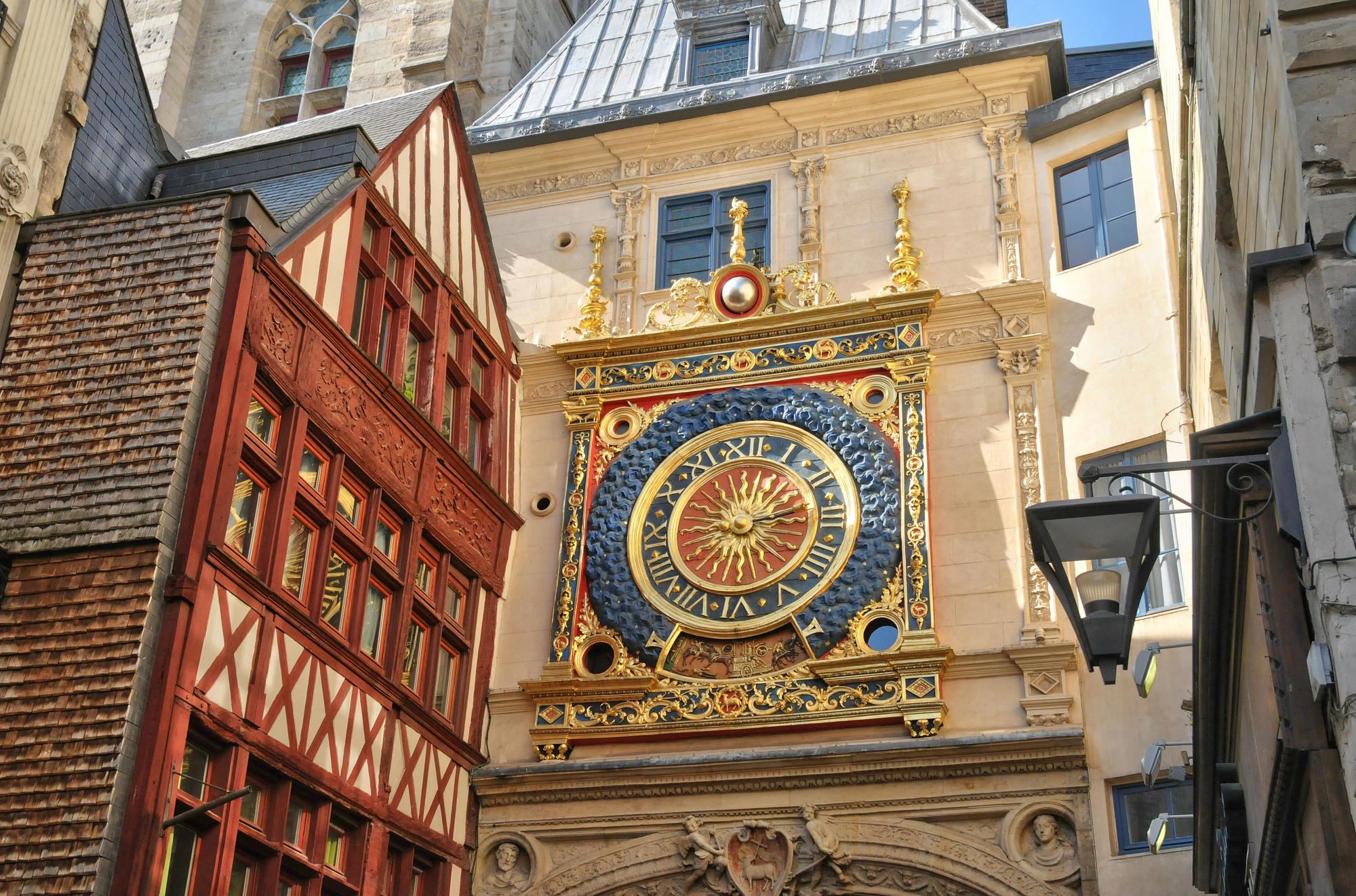
3. Old Market Square (Place du Vieux Marché)
Next on our list of Rouen must-sees is the Place du Vieux Marché, AKA Old Market Square.
You might not be able to tell from its abundance of fairytale buildings and charming cafes, but this is the historical site where Joan of Arc was famously executed.
For those who need a brief history lesson, Joan of Arc was a young French peasant girl who became a national heroine. She believed she was guided by divine visions to support Charles VII and help drive the English out of France during the Hundred Years’ War… and support she did! Joan led the French army to several important victories, boosting morale and helping to turn the tide of the war.
However, she was eventually captured by the English and their allies. In 1431, she was put on trial in Rouen for charges including heresy and witchcraft (a trial commonly considered to be both unfair and politically motivated, aiming to discredit her and Charles VII). Joan was ultimately found guilty and was executed by being burned at the stake when she was only 19 years old. Many years later, she was exonerated and eventually canonized as a saint by the Catholic Church.
These days, the square is much less execution-y, and is in fact one of the most beautiful places to soak up Rouen’s idyllic charm.
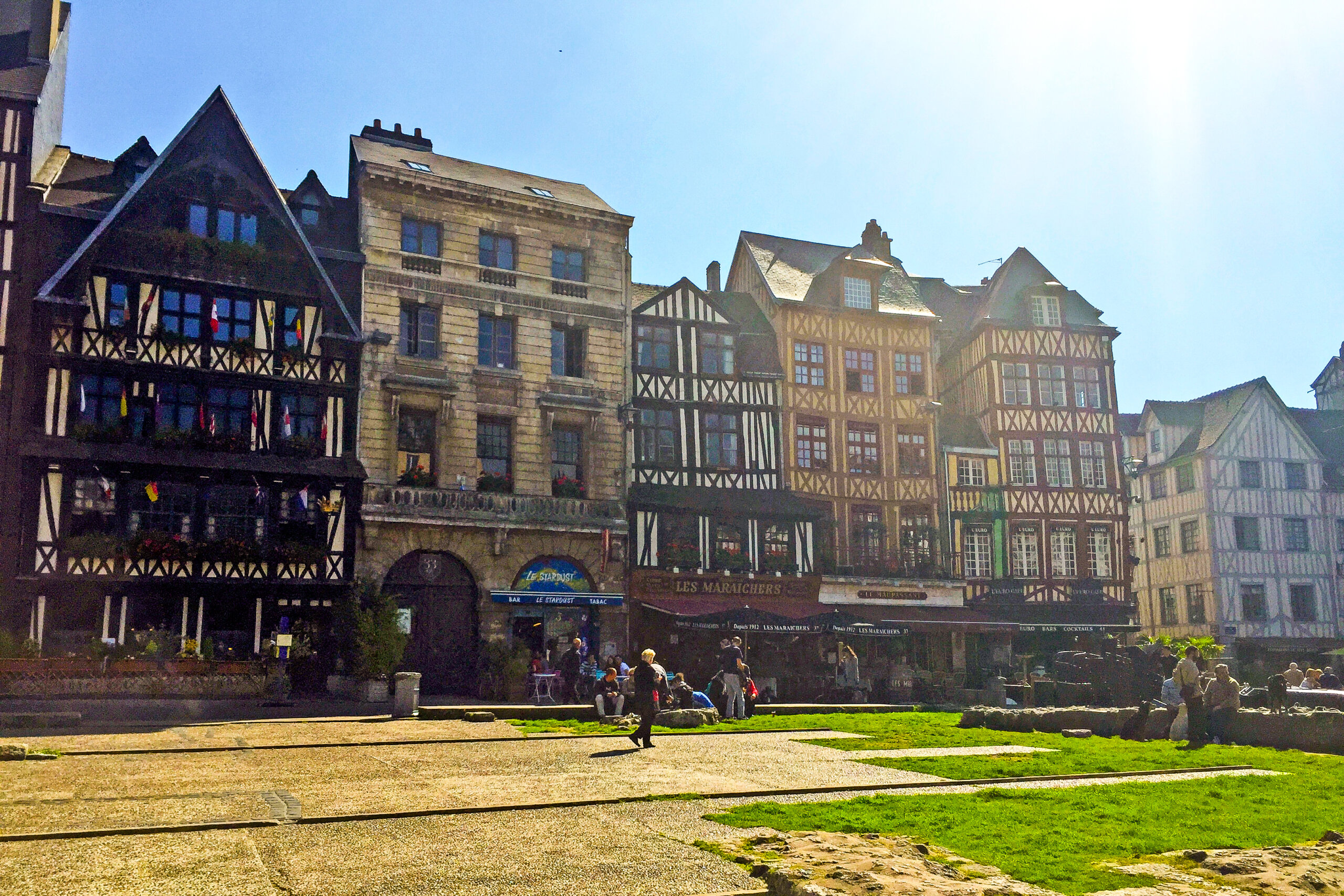
4. Joan of Arc Historial
For those interested in the Joan of Arc portion of Rouen’s history however, another Rouen attraction to check out is the Joan of Arc Historial, where interactive displays and multimedia exhibits guide visitors through the life and story of Joan herself.
This museum is located in the beautifully restored Archbishop’s Palace, where Joan was condemned to death back in 1431, as well as where her second trial took place in 1456.
Love it or hate it – today, the original medieval architecture has been carefully preserved and mixed with new modern elements, creating a unique space and backdrop for the museum’s various exhibits, which detail her early life, visions, and role in the Hundred Years’ War, along with the events leading up to her trial and execution in Rouen.
Highlights include an immersive audiovisual show that takes you through the key moments of her life, as well as her original trial manuscripts.

5. Wander around the historical core
Of course, one of the nicest parts of visiting Rouen is how walkable it is, with pedestrianized streets offering the perfect opportunity to enjoy the city’s beauty stress-free.
So, the best way to discover it is simply going for a stroll and relying on nosiness as your compass.
Some highlights of Rouen’s historic centre include…
- Rue Saint-Romain: A picturesque street near Rouen Cathedral known for its well-preserved medieval architecture and lovely views of the cathedral’s intricate façade.
- Rue Eau de Robec: Known for its small canal that runs alongside the road, this street is lined with beautiful half-timbered houses and small bridges that cross the water. It’s particularly pretty at the section near the National Museum of Education.
- Rue Damiette: A beautiful street lined with art galleries, boutiques and antiques shops in the gorgeous old half-timbered buildings. Once you come to the St. Maclou Catholic Church it’s also worth walking down colorful Rue Martainville as well.
If you need a bit of help, you can also book a guided tour like this one.
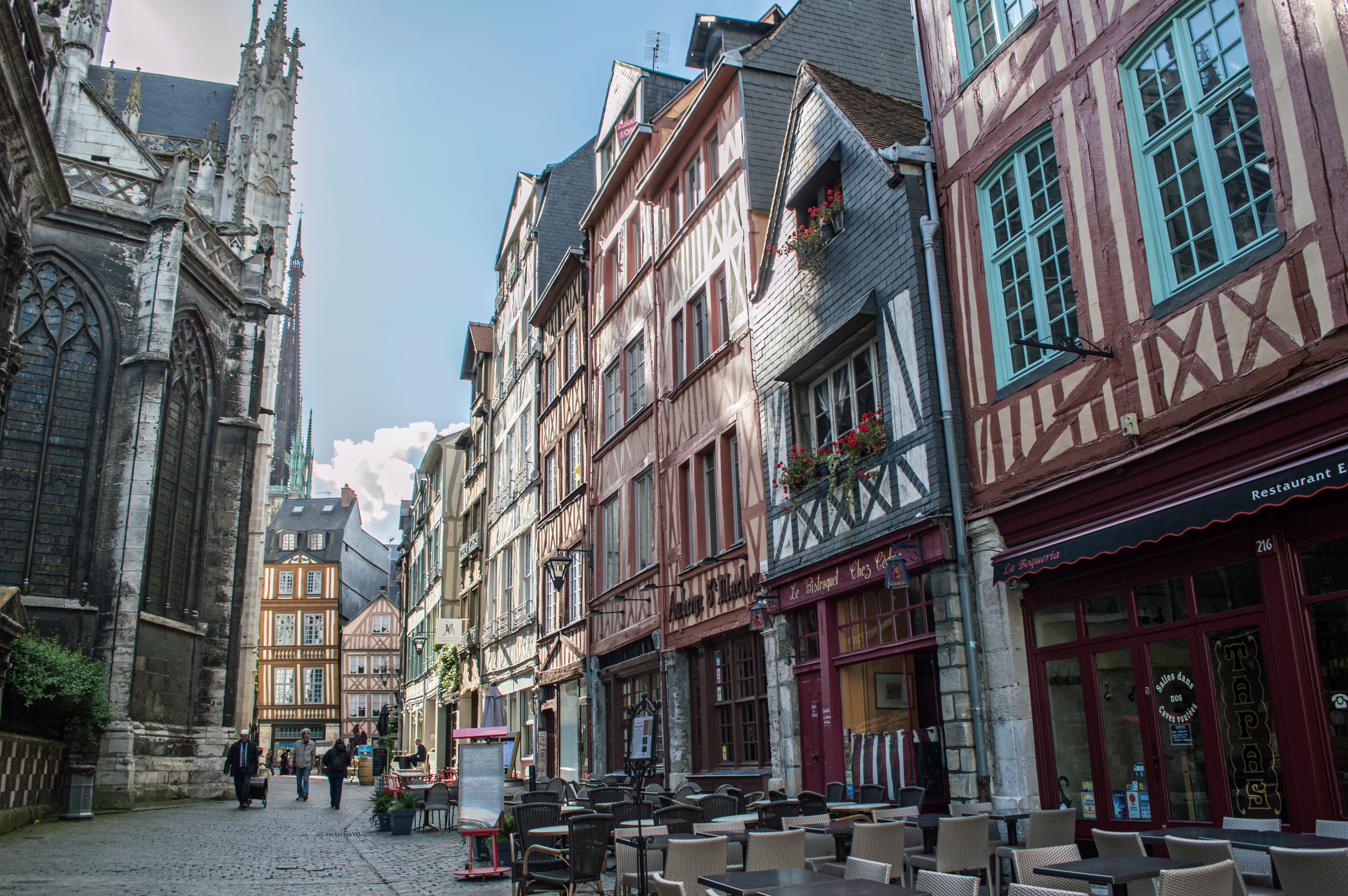
6. Saint-Ouen Abbey Church (Abbatiale Saint-Ouen)
While Rouen’s Cathedral certainly steals the show, another notable church to visit is the ornate Saint-Ouen Abbey Church, an example of Gothic architecture at its finest.
This church was built between the 14th and 16th centuries and is known for its grand design full of tall spires, and beautiful flying buttresses.
Highlights include its central tower, known as the “Crown of Normandy,” which reaches a height of 82 meters, as well as its impressive organ (built by Aristide Cavaillé-Coll), one of the largest and most famous in France. It’s often used for concerts and is known for its rich, powerful sound.
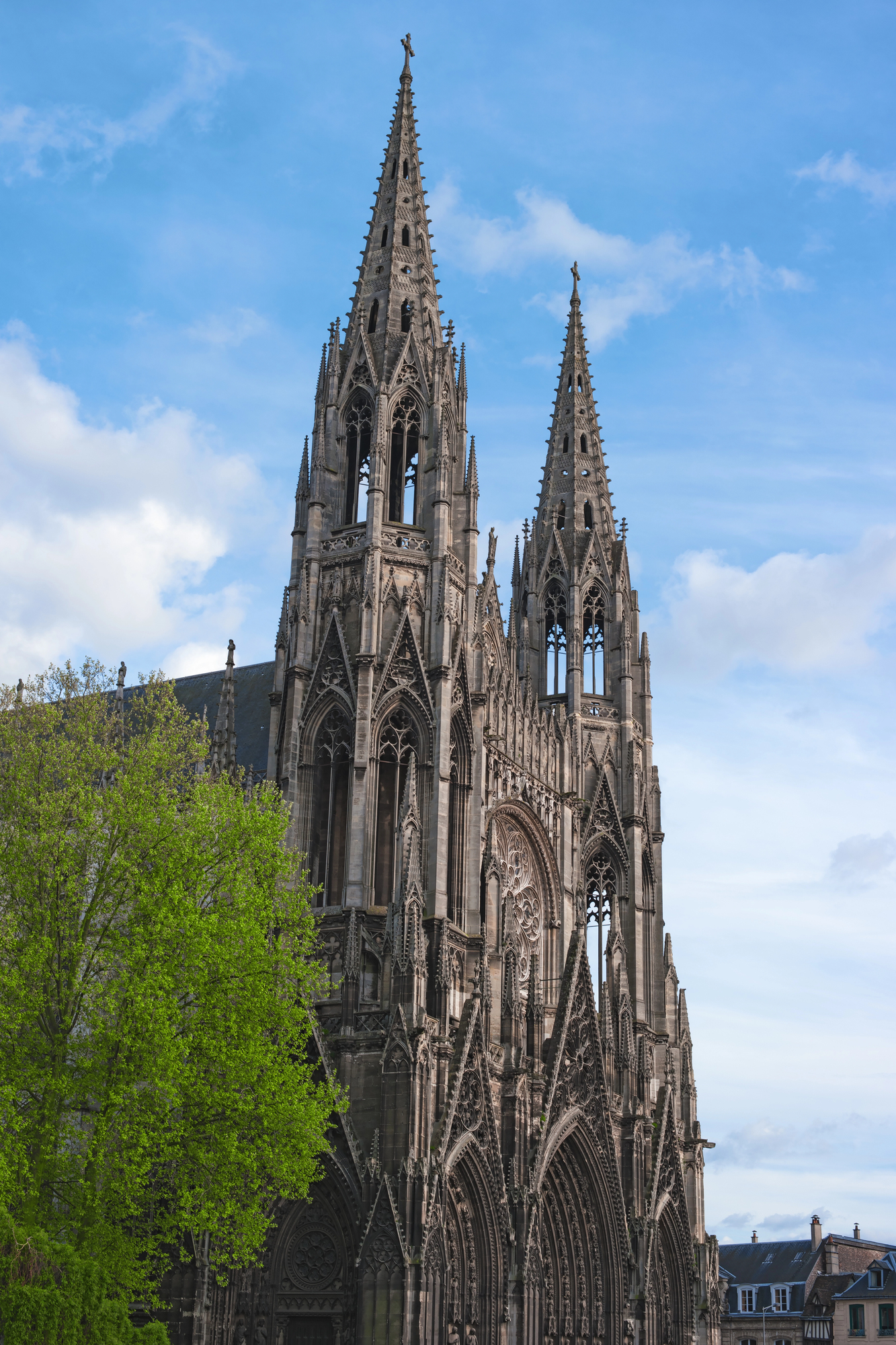
7. Aître Saint-Maclou
A more macabre attraction to see in Rouen is the hauntingly beautiful Aître Saint-Maclou, a former plague cemetery turned museum. But don’t worry, it’s a super cute former plague cemetery turned museum!
In brief, the Aître Saint-Maclou was originally built in the 16th century as a charnel house and ossuary during the time of the Black Death, a terrible plague widely considered to have killed 30-50% of Europe’s entire population.
Today, the Aître Saint-Maclou is (of course) no longer used for its original purpose. Instead, it’s a peaceful courtyard that houses an art school and galleries. Dark history aside, the building itself is really unique and interesting to see, with creaky-cute half-timbered structures containing detailed carvings that depict macabre scenes related to death, such as skulls, crossbones, and tools used by gravediggers.
Visitors can walk through the courtyard, admire the historic architecture, and see the intricate carvings up close. There’s also a small museum that provides more information about the history of the site and its significance.
Note: The audio guides here are particularly amusing, as they’re narrated by a cat and a gravedigger!
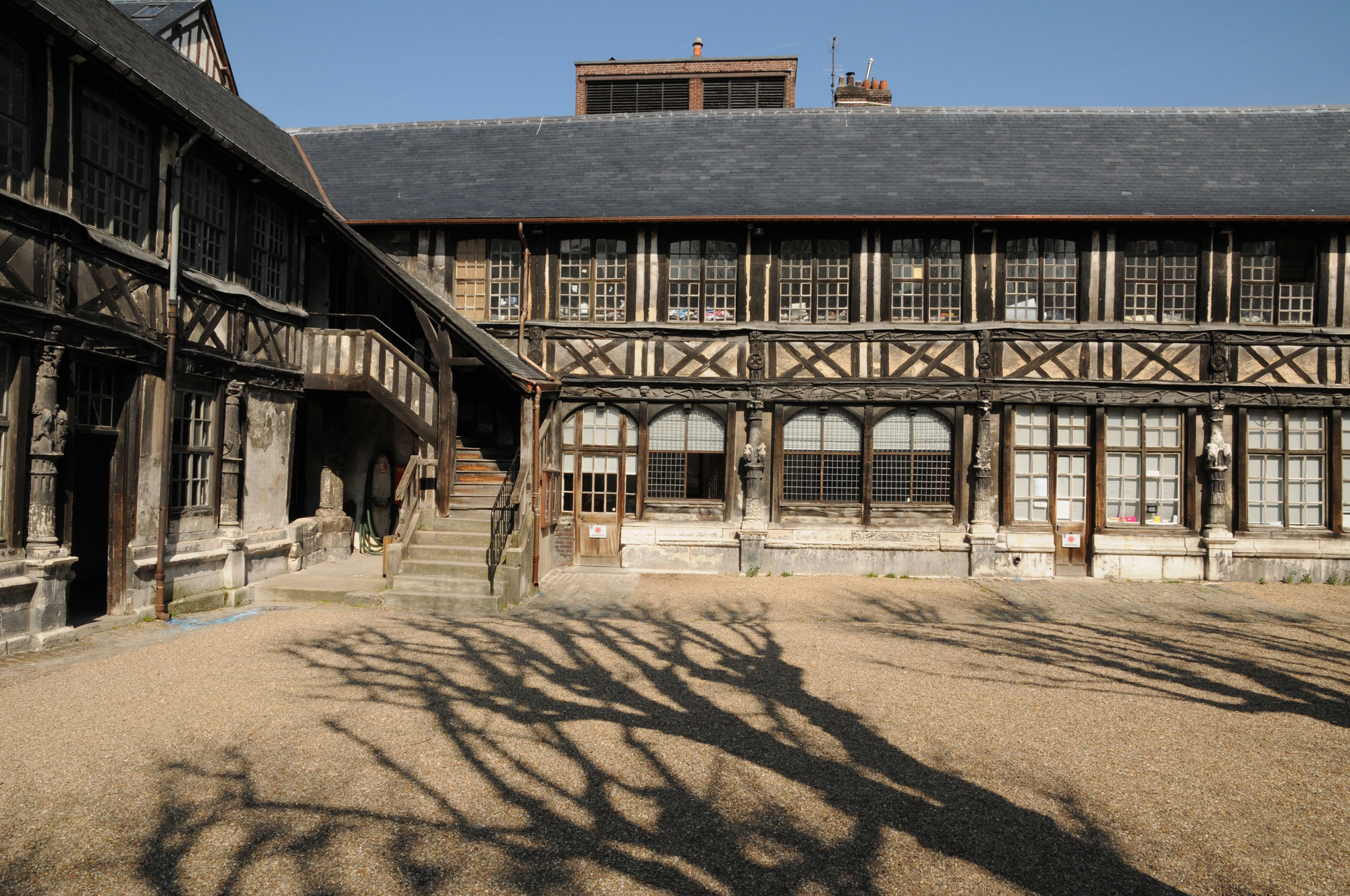
8. Musée des Beaux-Arts de Rouen
Apart from ogling buildings and traipsing past historic sights, Rouen has a handful of nice museums to offer. While I didn’t get a chance to visit any during my visit, I’ll list them all now for you in case you’re in need of rainy day activities, or just have some more time to spare.
One of the most popular museums in Rouen is the Musée des Beaux-Arts de Rouen, which houses a remarkable collection of paintings, sculptures, and decorative arts, spanning from the Renaissance to contemporary works. Established by Napoleon Bonaparte himself, highlights here include one of Monet’s paintings of Rouen Cathedral, in fact, this museum houses France’s largest collection of Impressionism paintings outside of Paris.
Along with Impressionism, the museum boasts a rich collection of French art from the 18th and 19th centuries, as well as an impressive collection of Old Masters such as Peter Paul Rubens, Caravaggio, Diego Velázquez, and Antoine Watteau. In addition to its paintings, the museum also has an extensive collection of sculptures, including Hercules Slaying the Hydra of Lerna, which went missing for a century before being rediscovered in a field!
Best of all, the Musée des Beaux-Arts de Rouen is free to visit.
9. Musée Le Secq des Tournelles
Another beautiful Rouen museum is the Musée Le Secq des Tournelles, a unique museum dedicated to wrought ironwork. This hidden gem houses an extensive collection of artistic iron creations, housed in a beautifully converted 16th century Gothic church, the former Church of Saint Lawrence.
The collection was started by Henri Le Secq des Tournelles, a passionate collector of ironwork, and contains an amazing array of iron objects from different periods and places, with everything from delicate jewelry and intricate locks to grand gates and ornate signs.
It’s located right behind the Musée des Beaux-Arts de Rouen and also free to visit, so you could easily explore both of them in one go.
10. Musée Maritime Fluvial et Portuaire
And for those looking for activities related to Rouen’s maritime history, don’t miss the Musée Maritime Fluvial et Portuaire. Here, you can discover the city’s connection to the River Seine and the world of river navigation through an array of fascinating exhibits that cover everything from the history of Rouen’s port to the various types of ships that have sailed these waters over the centuries.
One of the best things about the Musée Maritime is how it brings the stories of sailors, merchants, and shipbuilders to life. You’ll find detailed models of ships, as well as wonderful displays of nautical instruments, maps, and even some old diving suits that look like they’re straight out of a steampunk novel!
For kids and adults alike, there are some fun hands-on exhibits where you can try your hand at navigating a ship or learn about the mechanics of how different types of vessels operate. If you time your visit during the Rouen Armada (which takes place every five years) you’ll also get to see visiting tall ships from all around the world.
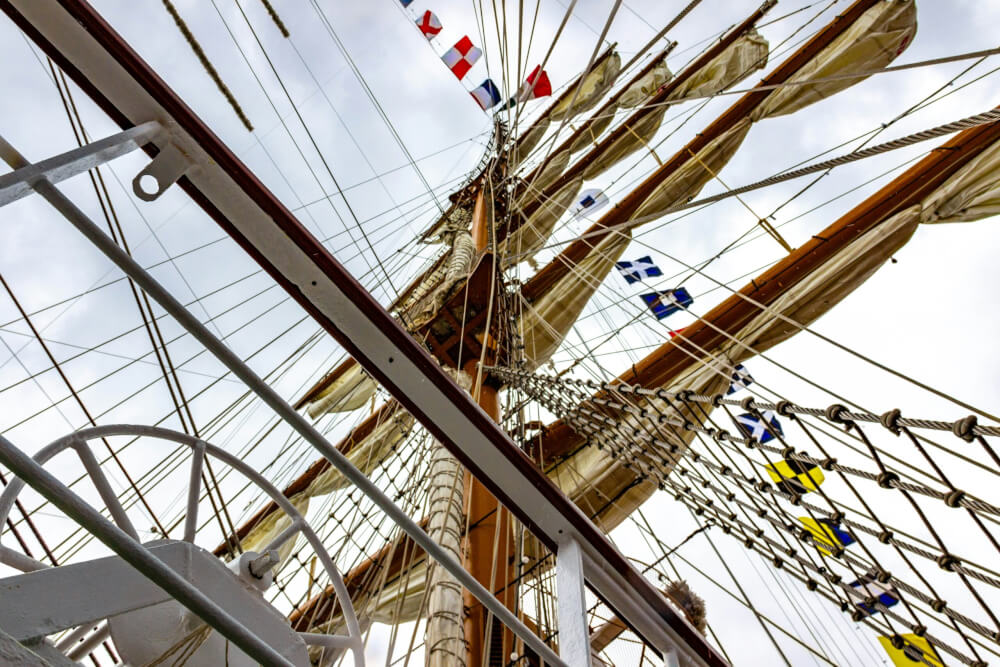
11. Musée Flaubert et d’Histoire de la Médecine
Interested in medicine and literature? Yes, Rouen has a museum on those topics as well – the Musée Flaubert et d’Histoire de la Médecine.
This museum offers a blend of literary history and medical heritage, housed in the birthplace of the famous French writer Gustave Flaubert. When you visit, you’ll find yourself stepping into the very room where Flaubert was born in 1821. It’s a special experience for fans of his work, as you get to see personal artifacts, manuscripts, and even some of his correspondence. The museum does a wonderful job of showcasing his life and the literary impact he had with classics like Madame Bovary.
But that’s just one part of the museum. The other half is dedicated to the history of medicine, which is equally intriguing. The building itself used to be a part of the old Hôtel-Dieu hospital, so it contains a rich collection of medical instruments, books, and other historical artifacts. As you walk through, you can see how medicine has evolved over the centuries, from medieval times to today.
12. Botanical Garden of Rouen (Jardin des Plantes de Rouen)
A hidden gem in Rouen for those wanting to enjoy the city’s green side is a visit to the Botanical Garden of Rouen, a verdant oasis with a diverse collection of plants and a serene pond.
The garden features many exotic plant species, medicinal plants, and beautiful flowers, with fun themed sections, such as the rose garden, rock garden, and a collection of tropical plants housed in greenhouses.
Depending on the time of year, you can also experience vibrant seasonal displays, such as blooming flowers in spring or summer, and colorful foliage in the fall. The garden often hosts educational exhibits or workshops on botany, gardening, and environmental conservation, if you want to go full plant-nerd on this one, but I wouldn’t necessarily prioritize it if you only have a short time in the city.
13. Relax along the river
Finally, for more relaxing walks (or perhaps energetic jogs) in Rouen, you can’t go past the banks of the River Seine.
There are lots of nice flat walking paths on either side of the river, particularly near the northern part of the city around the old centre area. On a nice day you can go for a wander but also stop to enjoy a drink or meal at one of the riverside cafés and restaurants.
The left bank has a park at each end of the main walking area, both of which are lovely spots to relax, as well as the live music venue Le 106 in a former ship hangar. Either side will give you great views of cruise boats on the river as well as the city’s most iconic bridges. Sunset or sunrise are, of course, ideal times to visit for photography.
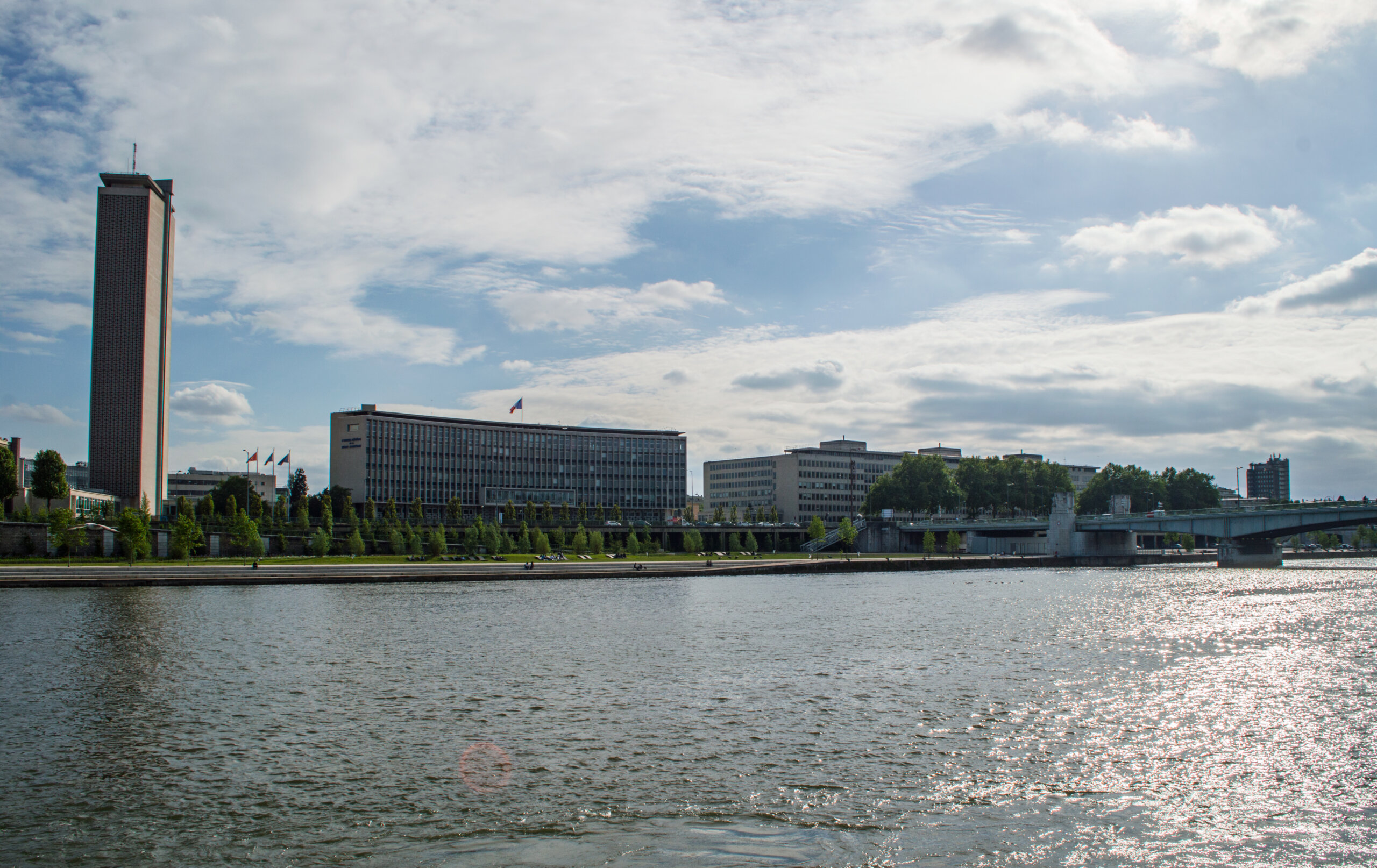
Did I miss any of your favourite things to do in Rouen?
Let me know in the comments so I can add more of the best Rouen activities to the list. Happy and safe travels! 🙂


